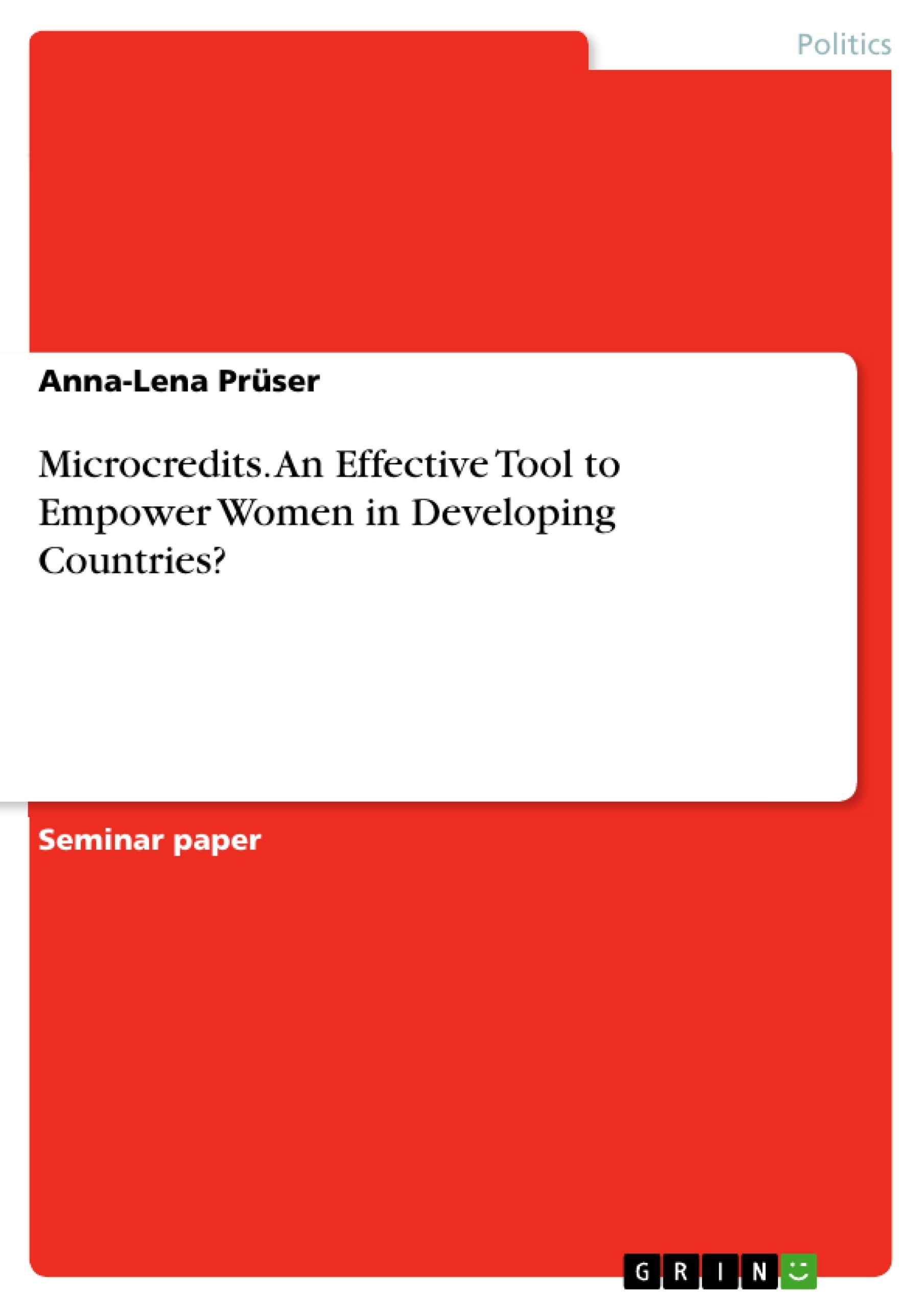This assignment aims to shed some light into the turbidity of women’s access to microcredits and their corresponding empowerment. Despite there is a range of literature reviewing the success of specific microfinance programs in different communities, here an overall picture of microcredits’ capabilities to empower women will be developed.
From 1997 when the first Microfinance Summit took place until today, 18 summits brought together microfinance practitioners, educational institutions, donors, financial institutions and non-governmental organizations to facilitate knowledge experience sharing in microfinance. While pushing this topic forward, the Microfinance Summit Campaign works on four issues. Next to “Reaching the Poorest”, “Financial Self-Sustainability” and “A Positive, Measurable Impact” is “Empowering Women” among the top four goals. Thereby microfinance and empowering women just covers two essential objectives of the United Nations Development Goals set in 2015. But the potential to empower the poorest people of the world were already recognized in the 1970’s and 1980’s when the first microfinance intuition, the Garmeen Bank in Bangladesh, was established. In the following decades, microfinance instruments, especially microcredits, underwent a unique success story and became one of the most popular development tools. In 2013, microfinance institutions counted 211 million clients, among them 114 poorest borrowers.
Inhaltsverzeichnis (Table of Contents)
- Introduction
- The Advent of Microfinance Institutions
- Conceptualization
- Why are women better clients?
- Why may effects of microcredits be higher when they are provided to women?
- Four schools
- Evidence on women's empowerment
- Economic empowerment
- Socio-cultural empowerment
- Interpersonal empowerment
- Psychological Empowerment
- Political and Legal Empowerment
- Empowerment vs. financial sustainability
- Contra arguments
- Access Empowerment? Bringing all together
Zielsetzung und Themenschwerpunkte (Objectives and Key Themes)
This assignment aims to analyze the relationship between women's access to microcredits and their empowerment in developing countries. It explores the effectiveness of microcredits as a developmental tool for empowering poor women, examining various perspectives and providing a comprehensive overview of the topic.
- The emergence and growth of microfinance institutions
- The conceptualization of microfinance and women's empowerment
- The reasons why women are targeted by microfinance institutions
- The different dimensions of women's empowerment related to microcredit access
- The critical assessment of the empowerment theory in relation to microfinance
Zusammenfassung der Kapitel (Chapter Summaries)
- Introduction: This chapter sets the context for the research, highlighting the growing importance of microfinance and women's empowerment in development discourse. It introduces the research question and outlines the structure of the paper.
- The Advent of Microfinance Institutions: This chapter discusses the historical context of microfinance institutions, focusing on the emergence of the Grameen Bank and its innovative approach to providing loans to the poor. It highlights the challenges faced by traditional financial institutions in lending to low-income groups and how microfinance institutions addressed these challenges.
- Conceptualization: This chapter defines the key concepts of microfinance and women's empowerment, emphasizing the need for clarity and a nuanced understanding of these terms. It distinguishes between microfinance and microcredit and explores the different dimensions of women's empowerment.
- Why are women better clients?: This chapter examines the reasons why women are often considered to be better clients for microfinance institutions. It explores the potential advantages of targeting women for microcredit programs.
- Why may effects of microcredits be higher when they are provided to women?: This chapter explores the argument that microcredits may have a greater impact on women's empowerment compared to men. It discusses the potential for microcredits to enhance women's economic, social, and personal well-being.
- Four schools: This chapter presents four different perspectives on the relationship between women's empowerment and microfinance, each with its own approach to understanding and analyzing the topic.
- Evidence on women's empowerment: This chapter reviews the available evidence on the impact of microcredits on women's empowerment, focusing on different dimensions such as economic, socio-cultural, interpersonal, psychological, and political empowerment.
Schlüsselwörter (Keywords)
The paper focuses on the intersection of microfinance, women's empowerment, and development in developing countries. Key terms and concepts explored include microcredits, microfinance institutions, women's empowerment, economic empowerment, socio-cultural empowerment, interpersonal empowerment, psychological empowerment, political and legal empowerment, gender equality, female autonomy, and poverty reduction.
- Quote paper
- Anna-Lena Prüser (Author), 2017, Microcredits. An Effective Tool to Empower Women in Developing Countries?, Munich, GRIN Verlag, https://www.grin.com/document/445277



